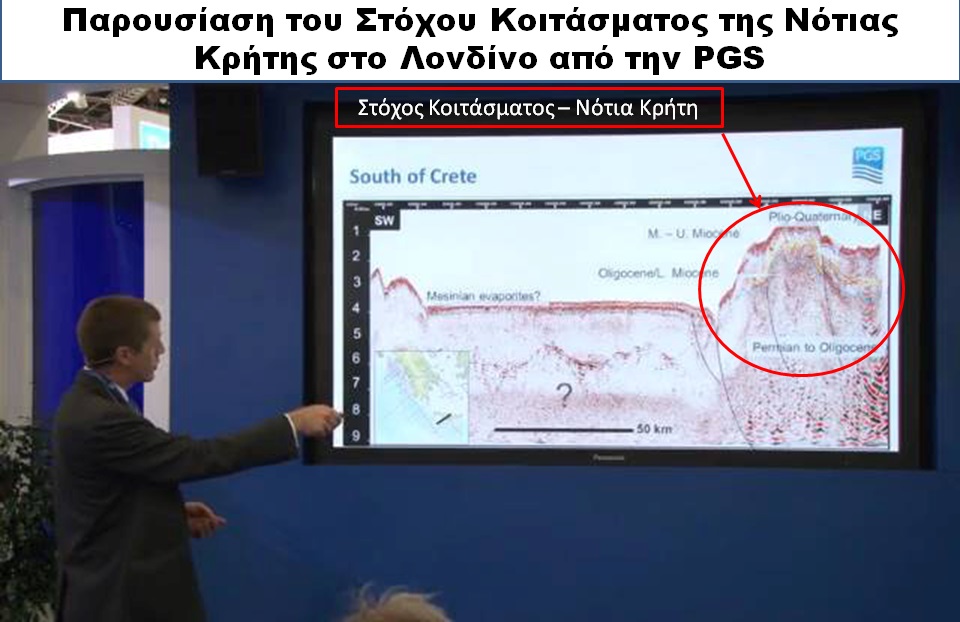21015 - PGS shows a Giant target-reserve south of Crete
E. Conophagos, N. Lygeros, A. Foscolos
Translated from the Greek by Athena Kehagias
In June 2013, PGS presented for the first time in London, the initial results of the underwater seismic surveys of the Ionian Sea and those south of Crete (Video Presentation of the PGS).
.
These recordings have already shown that, just 50 kilometers south of the Gulf of Messara, ie the marine plot 14 of the Greek EEZ, there is a gigantic geological structure of which the base field exceeds the 200 square kilometers, and which we’ve recommended to be named Minos as per the mythological hero of Crete.
In comparison, the extent of the geological structure of the deposit Aphrodite, in the marine plot 12 of the Cypriot EEZ, is approximately 100 square kilometers with recoverable reserves in the order of around 140 Billion m3).
A recent detailed reprocessing of these seismic lines that determined the specific structure, indicated clearly that there are reasonable chances – that the particular psammite-target (sandstones) of the lower Miocene – is covered by Messinian salts and medium Miocene clays, as that is the case in the already discovered natural gas deposits in the Eastern Mediterranean.
The sea depth at which the structure is located is about 1,500 meters, and the required depth of drilling for its evaluation, is estimated to be about 3,000 meters below the seabed.
Our first evaluation of the potential of natural gas in cubic meters (m3) that such a target deposit could contain, in case of hydrocarbon discovery after drilling (12% chance of discovery), gave the following results:
• Recoverable reserves 10 billion m3, with a 10% hydrocarbon inclusiveness level of the structure.
• Recoverable stock 45 Billion m3, with a 33% hydrocarbon inclusiveness level of the structure.
• Recoverable reserves 77 billion m3, with a 50% hydrocarbon inclusiveness level of the structure.
• Recoverable stocks 280 Billion m3, with an 100% hydrocarbon inclusiveness level of the structure.
We felt, that an overall beneficial thickness of the sandstones which are surrounding gaseous hydrocarbons is at 50 m (the effective hydrocarbons thickness of the sandstones in the Tamar reserve of the Israeli EEZ is 150 meters),with 20% porosity, with 70% hydrocarbon pore saturation, and an internal reserve pressure in the order of 200 Atm.
Taking in to account, that the expected medium-term Greek consumption is not expected to exceed the 7 billion m3 per year, this natural gas target-reserve could be assumed extremely interesting if we were to consider that the largest natural gas deposit ever discovered so far in Greece is that of South Kavala with recoverable reserves of around 1 billion m3.
We should note that the sea area south of Crete is another completely unexplored area.
For this reason our above stated calculations are indicative of the research interest in the area, and they should ASAP obtain practical confirmation of substantial existence of that specific target, with additional detailed seismic two-dimensional (2D) records, ie: with a denser grid.
Immediately after, this confirmation should be completed with three-dimensional (3D) seismics, and of course finally, that geological structure should obtain perforated drilling so as to definitively confirm the commercial existence of natural gas reserves, which could contribute to the promotion and the development of Greek EEZ.




